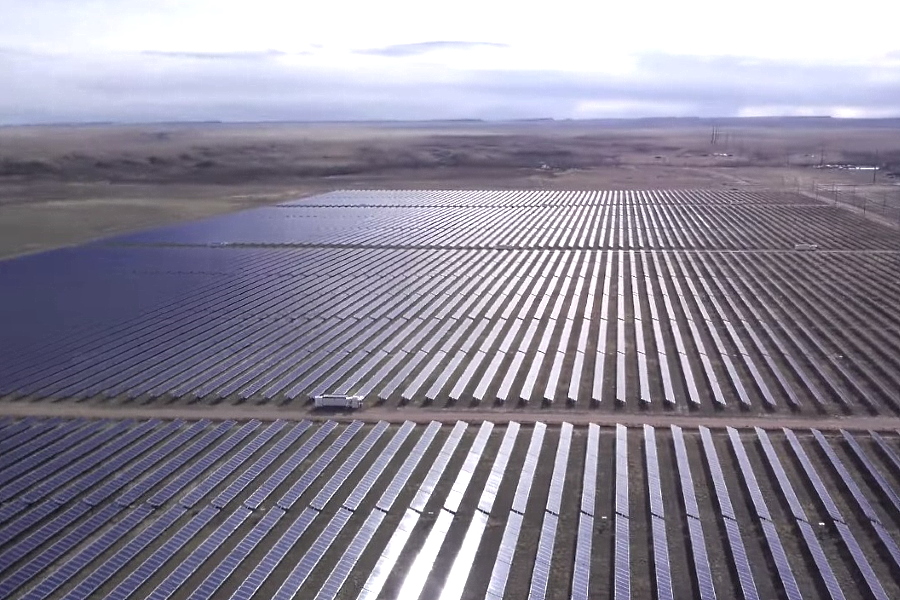Financing, engineering and construction for solar photovoltaic (PV) plants
Sedona Investmentsoffers:
• Investment financing from £5 - 500 million or more
• Minimizing the contribution of the project promoter
• Investment loan term up to 10 years
• Credit guarantees
You don't have to be an oil tycoon to make money on energy. It is enough to find a piece of land and wisely use the sun's rays, which reach the Earth's surface in sufficient quantities throughout the year.
The rules for the construction and operation of solar power plants, as well as the conditions for the power generation and sale of green energy, are clearly regulated by the legislation of each country.
However, the professionalism of the general contractor is considered the most important factor in the success of any PV project.
Sedona Investments with partners, having many years of practical experience in the construction of solar power plants around the planet, are ready to provide financing and advanced technologies and business connections for your project.
The implementation of a photovoltaic project includes the following steps:
• Feasibility study.
• Development of a general concept of the facility and calculation of costs.
• Search for funding for solar power plants in United Kingdom and other EU countries.
• Conclusion of contracts for design and construction work.
• Development and approval of a detailed construction schedule.
• Coordination of environmental and other project conditions.
• Obtaining a permit for the construction of a solar photovoltaic power plant.
• Preparation of a package of documentation for connecting to the mains.
• Drawing up a detailed design of the photovoltaic system.
• Selection and purchase of photovoltaic modules and other equipment.
• Preparation of the construction site and delivery of materials.
• Implementation of a full cycle of construction and installation works.
• Construction of an electrical substation and power transmission line.
• Connection and commissioning.
• Operation and maintenance.
In most countries of the world, the return on investment in the solar energy sector remains very high.
Moreover, due to expensive electricity and lower prices for photovoltaic panels, a solar farm now pays off much faster. The success of the project depends not only on the price of the electricity produced, but also on the optimally selected components, a well-thought-out financing model and an effective investment strategy.
Each project is developed taking into account the individual requirements and needs of customers, international quality standards and technical solutions, as well as investment costs.
We build solar photovoltaic power plants under an EPC contract (FIDIC), being responsible for every stage of your project, from financial modeling to operation and maintenance.
Photovoltaic power systems: advantages and disadvantages
The production of electricity using solar photovoltaic power plants has many benefits for business and society as a whole, since this energy is renewable and widely available.The construction of solar PV plants is considered by investors as the simplest and most affordable option among the other existing RES, especially if the schedule of solar energy production coincides with the schedule of its consumption (for example, power supply of factories operating on a day shift).
This energy source is not associated with noise pollution or carbon dioxide emissions. Although large-scale photovoltaic systems in areas with fragile ecosystems pose some environmental risks, this technology is considered one of the safest for the environment and human health.
Table: advantages and disadvantages of solar photovoltaic plants.
| ADVANTAGES | LIMITATIONS |
|
|
Benefits
Photovoltaic systems have a huge advantage over conventional power plants because the sun is an inexhaustible source of energy.These energy facilities do not pollute the atmosphere and water, do not emit greenhouse gases. In addition, they do not generate noise pollution.
Photovoltaic systems are quite expensive, but the construction of solar thermal power plants with heat storage facilities is significantly more expensive for investors compared to simple panels.
Another advantage is their wide availability, since even in remote places where access for energy from other sources is difficult, solar energy can always be obtained. These facilities can be compact or multi-megawatt, designed to meet the domestic needs of an isolated home or for large industrial consumers.
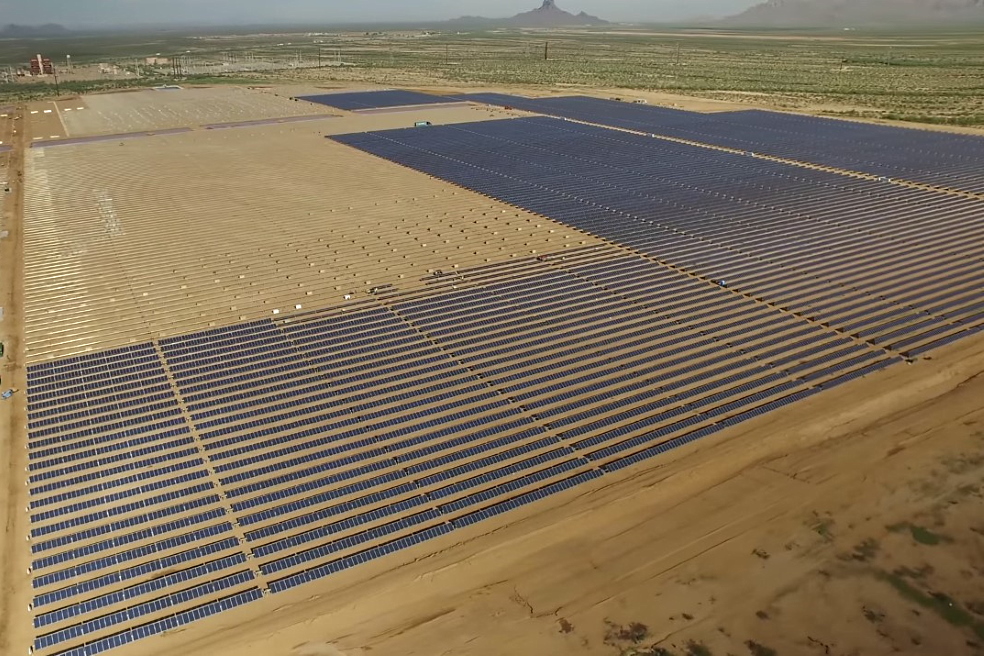
Disadvantages
Despite the obvious advantages, solar PV power plants have some disadvantages.The most important disadvantage of this technology is significant fluctuations in generation due to uneven solar radiation day and night, as well as throughout the year.
The uneven solar radiation requires engineering companies to implement original solutions, including hybridization with thermal power plants or the use of expensive energy storage technologies.
The efficiency of photovoltaic systems is highly dependent on the geographic location of the facility and climatic conditions. So, the angle of incidence of the sun's rays depends on the geographical latitude. The thickness of the atmospheric layers at the equator and at the poles is also different, as well as in areas with different topography.
It is believed that areas most suitable for solar energy are hot deserts in the intertropical regions, which have clear skies and fairly low air humidity. This could mean an environmental problem, since solar photovoltaic plants take up huge areas and affect the ecosystems of the untouched desert regions of the planet.
All these factors affect the possibilities of commercial use of solar energy, requiring in-depth research at the stage of engineering design of solar photovoltaic power plants.
The use of solar energy also poses certain indirect problems, such as the generation of waste from photovoltaic panels, which is highly toxic.
It is important to keep in mind that deserts are sparsely populated areas remote from areas with high energy consumption. The latter can be a problem that entails the inconvenience of power transmission over long distances.
The international company SI with partners has extensive experience in financing and implementing energy projects in many countries of the world.
We will help you evaluate your idea and suggest the most profitable solutions for power generation.
Engineering design of solar photovoltaic power plants
A modern photovoltaic system consists of many PV modules and a number of other elements that adapt the generated direct current to the needs of the consumer (transformer substations).If the system is to supply electricity at night, the engineering team must design an appropriate energy storage system (batteries).
Photovoltaic system components include:
• Solar cells and panels.
• Mounting structures.
• Charge controllers.
• Current inverters.
• Protection systems.
• Batteries.
To gain a clearer understanding of the engineering design of solar PV power plants, we offer a brief description of these components.
Solar cells and panels
The main electronic device for converting solar energy into electricity using the photoelectric effect is called a solar cell or solar cell. It is made of a semiconductor material that creates voltage by absorbing high-energy rays.The most common material used in the manufacture of solar cells today is silicon.
Gallium arsenide (GaAs) cells are most efficient, but these chemicals are very expensive and are therefore used primarily in space projects.
A typical solar cell is a semiconductor wafer made of crystalline or polycrystalline silicon with a barrier, for example, in the form of a pn junction. The thickness of the PV cell plates is 200-400 microns. On the front and back side of the plate, there are metal connections, which are electrical contacts.
Monocrystalline solar cells show the highest conversion efficiency of any silicon cell, but are also the most expensive to manufacture. Polycrystalline silicon cells are composed of cubic silicon blocks produced by slow cooling using a special technology. These blocks are cut into rectangular tiles, between which pn junctions are also formed.
Polycrystalline silicon cells are somewhat less efficient than monocrystalline ones.
Currently, the photovoltaic industry is based on monocrystalline and polycrystalline silicon (in 1997, these materials accounted for about 80% of world production).
The main advantages of this technology are the ability to use the experience of the highly developed semiconductor industry (microelectronics), high efficiency, simplicity and stability of operation.
Recently, the so-called "thin-film" technologies have become widespread. By using thin layers (1 micrometer thick) of expensive semiconductor material on cheap substrates with a large surface area, manufacturers have been able to significantly reduce the cost of the photovoltaic cell.
The advantages of amorphous silicon cells are low material cost, low energy consumption in the production of a PV module (due to low process temperatures), the possibility of coating flexible substrates, and practical simplicity of producing large panels.
Other materials used to make thin-film cells are cadmium telluride (CdTe) and copper indium diselenide (CIS).
The possibilities for their large-scale production have already been successfully demonstrated.
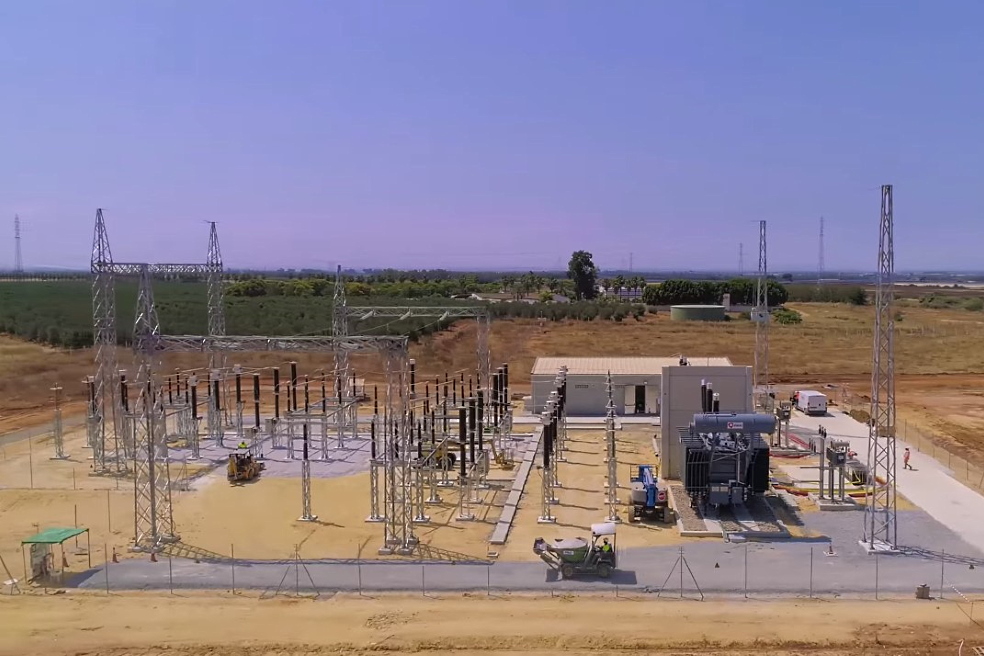
The elements are combined into large PV modules, which are encapsulated to protect against corrosion, moisture, pollution and weathering.
The enclosures must be extremely robust, as the expected service life of the panels is 20-30 years.
The global market offers a wide range of modules in various sizes to meet the demand for an increasing number of applications. Special PV modules are produced, which are integrated into roofs or facades of buildings. Modules are also produced that are particularly resistant to corrosion caused by salt sea water. The latest development in this area is the production of a translucent module for use as windows.
Batteries for photovoltaic systems
The easiest way to store the energy produced in photovoltaic systems is to use rechargeable batteries, especially because photovoltaic cells generate a constant current suitable for charging such batteries.A charged battery guarantees power supply in the absence or insufficient solar radiation.
Compared to the demand for other batteries, the PV battery market is today very small and has traditionally received little attention worldwide.
Most of the batteries used in photovoltaic systems are inexpensive lead acid devices. In regions with extreme climates where high reliability is required, nickel-cadmium batteries are used.
Investors today can expect good quality batteries of this type to last 7-8 years with proper handling and proper charge controller.
Today this direction is actively developing with the participation of such well-known battery manufacturers as Tesla. At the same time, original approaches such as cryogenic energy storage (CES) are being developed.
Charge controllers
Battery life is highly dependent on how charging and discharging is controlled, especially for lead acid batteries.A suitable battery charge controller will limit the depth and rate of discharge based on the temperature of the battery to minimize electrolyte evaporation.
Charge and discharge voltage limits should be set according to the specific battery type and operating temperature.
These settings can have a significant impact on the maximum battery life.
High battery temperatures can shorten battery life as it accelerates corrosion and self-discharge. High temperatures can also increase the emission of gases during charging, which should be avoided, including through forced ventilation.
Photovoltaic modules used to charge batteries usually operate at constant voltage.
Some controllers in photovoltaic systems use a peak tracking system to ensure maximum power output.
The advantages of using MPPT depend on the specific application of the equipment, so the use of this technology must be weighed against the additional investment costs and the risk of reducing the reliability of the system.
The list of manufacturers of charge controllers for solar power plants (Atess Power Technology, BR Solar and others) is extremely wide, but only a small number of companies offer truly original solutions.
When supplying equipment for solar photovoltaic power plants, the required parameters of each component and those financial resources that the investor is ready to allocate for the implementation of a project are taken into account.
Solar inverters
The main functions of the inverter are to convert DC to AC and waveform the output AC voltage.These devices are designed to operate continuously near their maximum power point.
Currently, the market offers a wide variety of solar inverters from manufacturers such as Huawei, SMA, Sungrow Power Supply or Power Electronics. We will help the customer to make the right choice thanks to a deep understanding of the technological features and parameters of the equipment.
The most important characteristics of an inverter in photovoltaic systems are reliability and efficiency.
The efficiency of an inverter is usually quoted by companies for a specific rated power, but typically, inverters in PV systems operate at partial load.
Inverters typically have efficiency at full load from 95% to 98%, and at 10% load this figure ranges from 85% to 95%. Inverters show a decrease in efficiency as the output and input power decreases. High efficiency at part load is especially important for inverters operating in temperate climates in Europe, where the average annual solar cell output can be as low as 11-13% of peak power.
Unfortunately, there is no one-size-fits-all solution for every PV system.
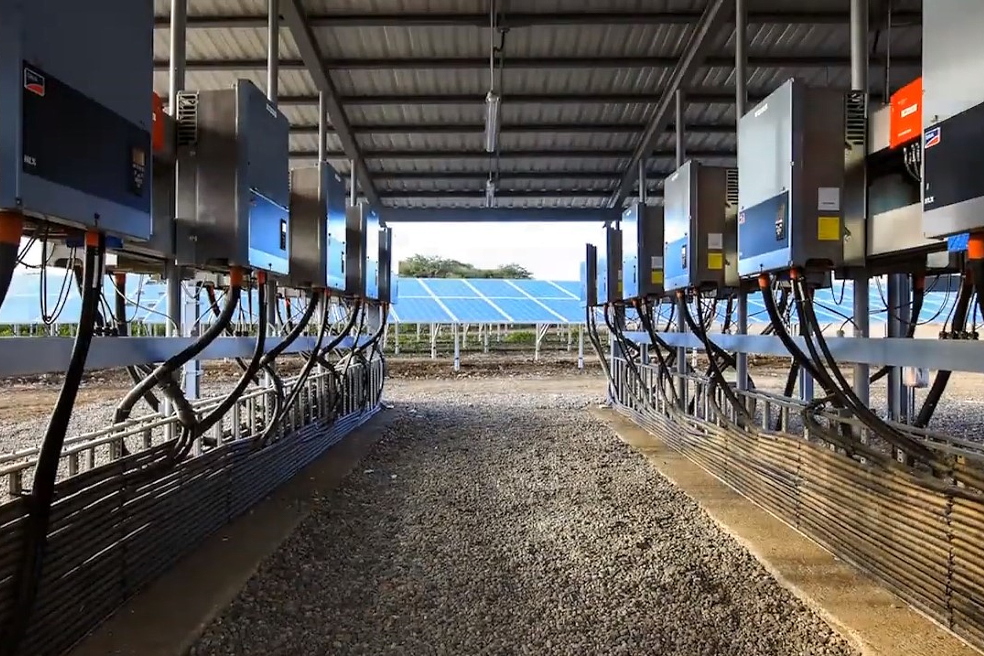
Supply of photovoltaic modules for a solar power plant
The success of a photovoltaic project consists of a number of factors, such as the sensitivity of photovoltaic cells to shading, mechanical damage, or high temperatures.Always select panels from reputable manufacturers and use experienced contractors when installing them.
Currently, companies such as JinkoSolar, JA Solar Holdings, Trina Solar, Canadian Solar and LONGi Solar are leaders in the PV module market. Most of the world's largest solar cell manufacturers are located in Asia.
Together with our partners, we work closely with leading solar power equipment manufacturers and suppliers from China, Europe and the United States.
We are ready to offer a profitable solution for any project, using our rich experience and business contacts.
The supply of equipment for solar PV power plants requires a deep understanding of the technical characteristics of the equipment and its operating conditions. For such an important investment decision as choosing a PV module, it is important to involve professionals in the early stages of the engineering design of your facility.
When choosing photovoltaic panels for a large project, it is important to carefully weigh their parameters.
It is worth remembering that the power of the panels is an important parameter, but not the only one. Below we will briefly discuss which specifications to consider when choosing a photovoltaic module.
PV module type
Solar panels for the construction of power plants are made from silicon cells.Their structure can be monocrystalline or polycrystalline.
It is interesting that elements with a polycrystalline structure receive more energy from scattered radiation, so their practical use is usually more profitable. Amorphous silicon cells are relatively cheap.
They have a high initial efficiency, which however drops rapidly under operating conditions.
Power at MPP
Power at MPP (Maximum Power Point) is achieved by photovoltaic modules under optimal conditions.This is a reference point when planning a photovoltaic system.
Since solar panels operate in different insolation conditions, the amount of solar energy supplied varies and depends, for example, on cloudiness, time of year and angle of incidence of sunlight. Therefore, the technical characteristics of the modules are indicated for standard test conditions (STC).
These results are obtained under laboratory conditions at a cell temperature of 25⁰C and an insolation of 1000W / m².
Real operating conditions differ significantly from laboratory ones, so the engineering team takes into account additional parameters to select the optimal photovoltaic modules in a particular case.
Power at NMOT / NOCT
Power at NMOT / NOCT refers to the actual power of the solar panel at its maximum power point under near-real conditions.NOCT stands for Normal Operating Cell Temperature. We are talking about a temperature of 25⁰C, insolation 800 W / m² and an average wind speed of 1 m / s, which corresponds to the climatic realities of Europe.
PV module efficiency
Another criterion to consider when choosing a suitable model is the efficiency of the PV module.This parameter is important when the project initiator has a limited area for the construction of a solar photovoltaic power plant.
The efficiency of a module is actually the ratio of the power of a solar cell to the power of solar radiation. Lower efficiency is associated with more surface required to achieve the same power.
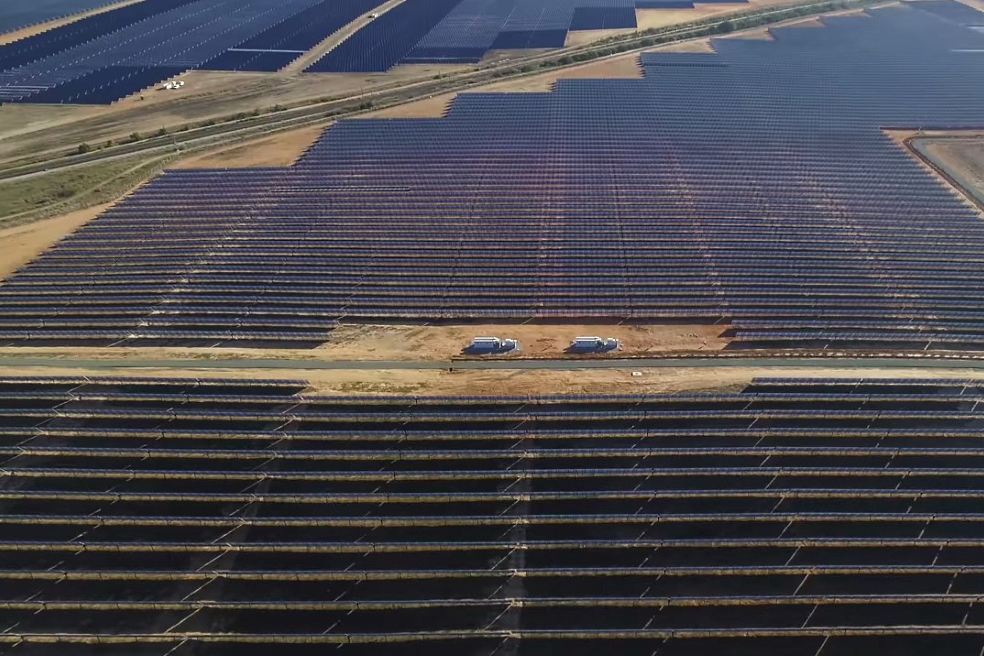
Temperature at nominal conditions (NMOT / NOCT)
A parameter worth considering when selecting suitable PV panels is the cell temperature under nominal operating conditions (NMOT / NOCT).The lower the NOCT value, the better. A good quality PV module should have an indicator less than 50⁰C.
MPP power temperature coefficient
The MPP power temperature coefficient defines the power that a photovoltaic module can achieve at a specific temperature.This parameter shows how many percent the power is reduced when the temperature rises 1 ° C above the test temperature of 25 ° C. The parameter should be as close to zero as possible.
Annual capacity degradation
In the first year of operation, photovoltaic modules can lose 2-3% of their efficiency.In subsequent years, the annual capacity degradation slows down and averages about 0.5% per year.
Solar panel efficiency averages 80% after 25 years, and very low degradation models maintain 85% efficiency after 30 years.
When choosing photovoltaic models, SI prefers proven technical solutions from the world's leading manufacturers.
Our approach guarantees the customer an optimal ratio of price, quality and durability.
A reliable contractor is the most important factor
The key to the success of a photovoltaic project is the right choice of a company that offers equipment supply and installation.Today it is impossible to say unequivocally which of the PV technologies available on the market is the most profitable.
It all depends on the requirements of customers, the location of the power plant, as well as the parameters of certain equipment.
The reliability of the engineering company supplying and installing the modules seems to be more important than the solar technology used.
When choosing a PV system, it is worth considering the daily electricity consumption profile and the characteristics of your facility.
Knowing the power of PV modules is not enough to determine the real potential of power generation. To select the best technical solutions for your business and achieve maximum efficiency, you need to get expert advice during the planning stage.
Are you interested in financing or photovoltaics?
Do you have further questions?
Contact the official representatives of the SI company to learn more about our services.



